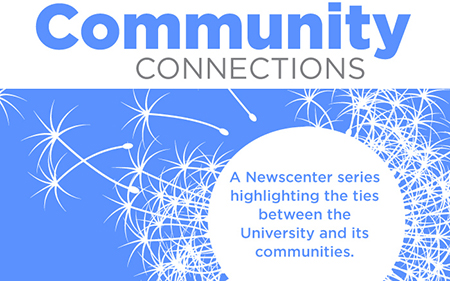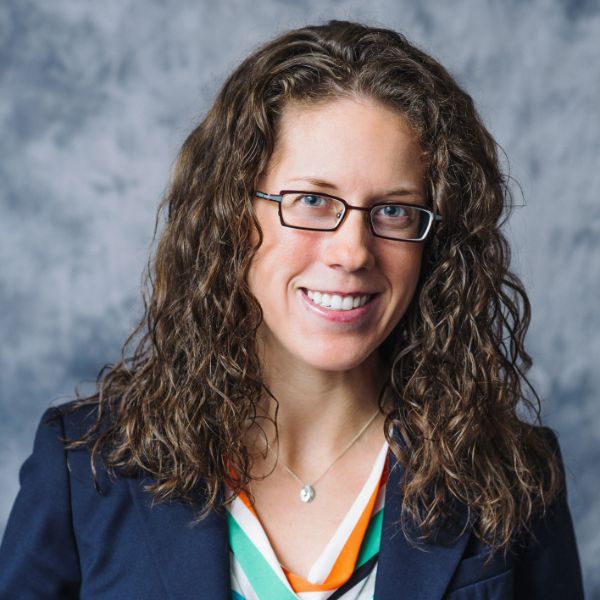When we think of research, many of us picture test tubes in a laboratory or manuscripts in a library archive. But some research projects—especially in the fields of health, education, and the social sciences—involve people as they go about their daily lives. Steeped in the University community, it can be easy to overlook the Greater Rochester community members who help make a lot of the research at the University possible.
How, then, can the University conduct community-engaged projects that are effective, evidence-based, measurable, and sustainable?
Rochester students, instructors, researchers, and community members explored this question as part of the fifth annual Community Engagement Symposium in September. A series of workshops hosted by the University’s Student Bridge for Community Engagement Committee (BRIDGES) were held at the School of Nursing and, for the first time, on the River Campus, drawing an audience of students and instructors interested in the intersection of public health, education, research, civic engagement, and community development.
 Working at this intersection are people like Dr. Michael Mendoza ’12S (MS), the Commissioner of Public Health for Monroe County and an associate professor in the Department of Family Medicine, Public Health Sciences, and Nursing at the Medical Center. When it comes to population health, Mendoza says he has always had an eye toward the bigger picture. “There are limits to what we can do as physicians,” he explained. In the case of the opioid overdose crisis in Monroe County, for example, there are contributing factors that “reside beyond the reach of even the most progressive office-based clinical settings,” Mendoza wrote in The Bulletin, a publication of the Monroe County Medical Society.
Working at this intersection are people like Dr. Michael Mendoza ’12S (MS), the Commissioner of Public Health for Monroe County and an associate professor in the Department of Family Medicine, Public Health Sciences, and Nursing at the Medical Center. When it comes to population health, Mendoza says he has always had an eye toward the bigger picture. “There are limits to what we can do as physicians,” he explained. In the case of the opioid overdose crisis in Monroe County, for example, there are contributing factors that “reside beyond the reach of even the most progressive office-based clinical settings,” Mendoza wrote in The Bulletin, a publication of the Monroe County Medical Society.
Kathleen Washington, the city of Rochester’s deputy commissioner of neighborhood and business development, spoke to some of these contributing factors during her presentation on Rochester’s history, culture, and economics. “A lot of people describe Rochester from the position of poverty. I refuse to do that,” she said. Instead, Washington refers to the city’s current economy as bi-modal, with its highly skilled workers in technology fields and low-skilled workers in service jobs or unemployed.
Washington believes Rochester is finally right-sizing after a decline in manufacturing over the past few decades. “We have challenges and opportunities like any other city,” she said, “but we also have huge assets.” These include an affordable housing market, abundant natural water systems, a culture of entrepreneurship, and intellectual capital that puts Rochester at the forefront of advanced technologies, such as photonics.
In some ways, the city and the University’s fortunes are inextricably bound. As a result, the benefits of engaging and working with each other go both ways, said Kit Miller, director of the University-affiliated Gandhi Institute for Nonviolence. “Building trust with leaders and community members will increase the rates of participation in research and the effectiveness of interventions.”
While moderating a panel discussion, Miller stressed the importance of community-based action and community-engaged research that is done with people instead of for them. “The trust you build when engaging the community is the vehicle by which you can make a difference.”
Making a difference also means using evidence-based research to inform community-based projects, services, and interventions. “Knowledge all by itself is useful and necessary, but just giving people information is not enough,” said Andrew Aligne ’01M (MPH), director of the Hoekelman Center, which trains leaders in community health and advocacy, and partners with dozens of community organizations in Rochester.
In a world of fake news, researchers today have a special responsibility to use and contribute to the evidence base. Sometimes this means critically evaluating what some might see as “obvious” solutions to public health issues. For example, Aligne asked the audience to consider the ubiquitous “We Card” signs located where cigarettes are sold in the United States. Rather than deterring or reducing smoking among youth, the evidence indicates that the signs—which were developed by the tobacco industry’s lobbying organization—advertise tobacco products as “forbidden fruit” to young people.
In addition to being evidence-based, the most productive collaborations between the University and the community—such as the Center for Community Health & Prevention, the East High School Partnership, and the Rochester Center for Community Leadership, among others—foster mutual benefit and respect. And the result? Credible, accessible, and useful information and relationships that helps make both Rochesters ever better.




